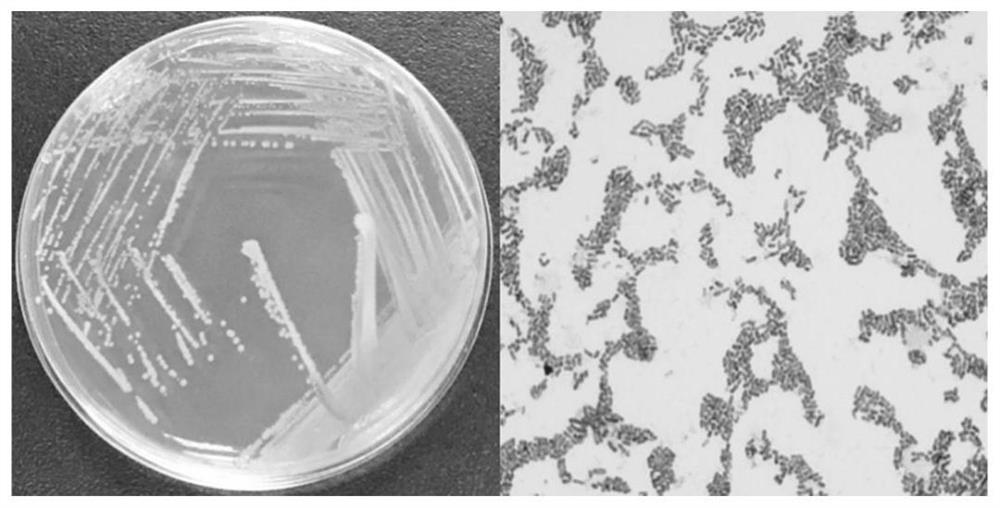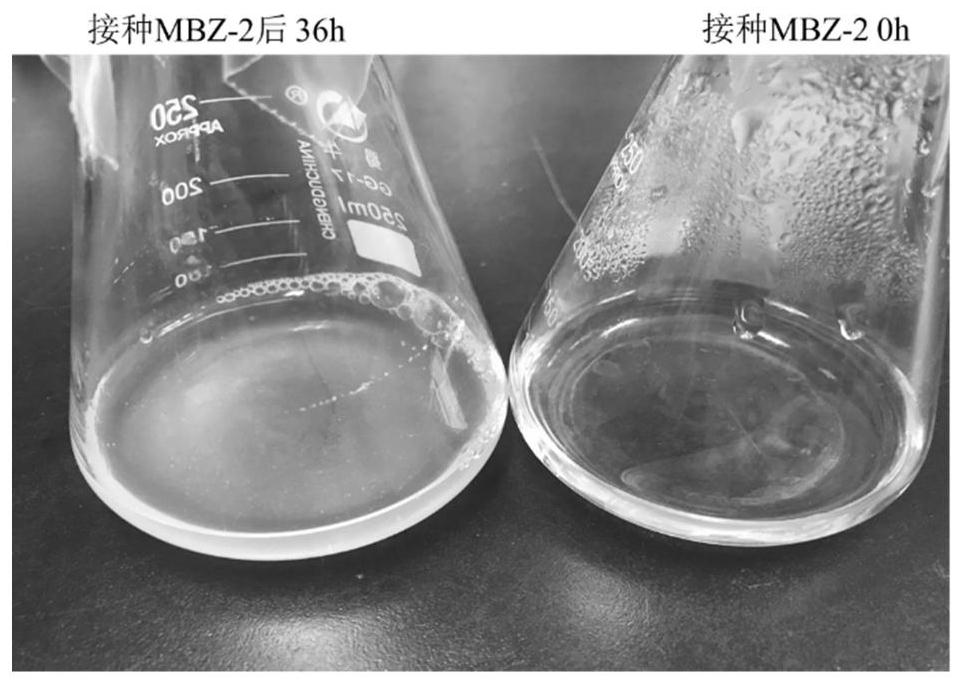Achromobacter and its application in degrading p-toluenesulfonic acid and quizalofop
A technology of p-toluenesulfonic acid and achromobacter, which is applied in the biological field and can solve problems such as human and animal safety impacts, pollution, and ecological damage
- Summary
- Abstract
- Description
- Claims
- Application Information
AI Technical Summary
Problems solved by technology
Method used
Image
Examples
Embodiment 1
[0031] Example 1: Isolation of Achromobacter sp MBZ-2
[0032] Sludge samples were collected from the activated sludge tank of a wastewater treatment plant of a pesticide production enterprise in Jiangsu, and the continuous enrichment culture method was used for enrichment culture. The degradation effect was tested by high performance liquid chromatography. 0.5g / L solid inorganic salt of p-toluenesulfonic acid (medium formula: p-toluenesulfonic acid 0.5g / L, NH 4 Cl 1.0g / L, KH 2 PO 4 0.6g / L, K 2 HPO 4 1.3g / L, NaCl 0.5g / L, MgSO 4 ·7H 2 0.2 g / L, pH 7.0. ) medium, cultured in a constant temperature incubator at 30°C until colonies grew. According to the size, color and shape of the colony, pick different single colonies for streak purification. The strain whose degradation efficiency was 98.4% after 72h was named as MBZ-2.
Embodiment 2
[0033] Example 2: Determination of the degradation effect of Achromobacter sp MBZ-2 on quizalofop
[0034] Achromobacter sp MBZ-2 was streaked on the LB solid plate, and then a single colony was picked from the LB plate, inoculated into the LB liquid medium, and cultivated at 37°C, 180rpm in a shaker to OD600= After centrifugation at 1.0, 10,000 rpm, the supernatant was discarded, washed three times with sterile water, and resuspended in an equal volume of sterile water as a seed solution. The MBZ-2 seed liquid was inoculated in the inorganic salt medium with quizalofop-p-ethyl concentration of 50 mg / L at an inoculum of 1vt%, cultivated in a shaker at 37°C and 180 rpm, and the quinazoline in the solution was measured after sampling and filtration every 4h. Heling concentration, the effect is as follows image 3 shown, the degradation curve see Figure 4 .
Embodiment 3
[0035] Example 3: Determination of the degradation effect of Achromobacter sp MBZ-2 on p-toluenesulfonic acid
[0036] Achromobacter sp MBZ-2 was streaked on the LB solid plate, and then a single colony was picked from the LB plate, inoculated into the LB liquid medium, and cultivated at 37°C, 180rpm in a shaker to OD600= After centrifugation at 1.0, 10,000 rpm, the supernatant was discarded, washed three times with sterile water, and resuspended in an equal volume of sterile water as a seed solution. The MBZ-2 seed solution was inoculated into an inorganic salt medium with a concentration of 500 mg / L of p-toluenesulfonic acid at an inoculum amount of 1 vt%, and cultured at 37 °C in a 180 rpm shaker. p-toluenesulfonic acid concentration, the effect is as figure 2 shown, the degradation curve see Figure 5 .
PUM
 Login to View More
Login to View More Abstract
Description
Claims
Application Information
 Login to View More
Login to View More - R&D
- Intellectual Property
- Life Sciences
- Materials
- Tech Scout
- Unparalleled Data Quality
- Higher Quality Content
- 60% Fewer Hallucinations
Browse by: Latest US Patents, China's latest patents, Technical Efficacy Thesaurus, Application Domain, Technology Topic, Popular Technical Reports.
© 2025 PatSnap. All rights reserved.Legal|Privacy policy|Modern Slavery Act Transparency Statement|Sitemap|About US| Contact US: help@patsnap.com



